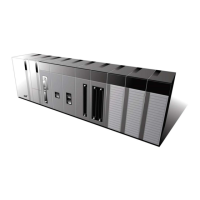
Do you have a question about the LS Industrial Systems XG5000 and is the answer not in the manual?
| Manufacturer | LS Industrial Systems |
|---|---|
| Model | XG5000 |
| Category | Controller |
| Simulation | Yes |
| Memory Capacity | Varies by PLC model |
| I/O Capacity | Varies by PLC model |
| Dimensions | Varies by PLC model |
| Weight | Varies by PLC model |
| Type | Programming Tool |
| Supported PLC Series | XGB, XGI, XGR, XGK |
| Programming Languages | Ladder Diagram (LD), Instruction List (IL), Function Block Diagram (FBD), Structured Text (ST), Sequential Function Chart (SFC) |
| Operating System | Windows |
| Communication Interface | RS-232, USB, Ethernet |
| Communication Protocols | Modbus RTU, Modbus TCP, Ethernet/IP, Modbus, LS Bus |
Describes the key features and merits of the XG5000 software for PLC programming and debugging.
Lists the minimum and recommended hardware and software requirements for installing and running XG5000.
Provides step-by-step instructions for installing the XG5000 software, including special package installation.
Details the process of installing the USB device driver for connecting the PLC with the PC.
Explains how to verify the successful installation of the USB device driver via Device Manager.
Describes the layout and components of the XG5000 software screen interface.
Explains how to open, close, and save projects within the XG5000 software.
Details various editing functions like Copy, Cut, Paste, Drag & Drop for efficient program editing.
Guides users on how to specify and customize shortcut keys for instructions in the software.
Covers configuration settings for the XG5000 software, including common editor, LD, SFC, and ST options.
Describes the items involved in configuring a project, including PLC, variables, and programs.
Explains how to create, open, save, and manage project files.
Details the process of opening and converting GMWIN project files into XG5000 projects.
Guides on setting, changing, or deleting passwords for project files to prevent unauthorized access.
Explains global and direct variables, including their declaration, comments, and flags.
Details how to register, edit, copy, cut, delete, and paste global/direct variables.
Describes local variables used within a specific program and how to register them.
Covers editing, copying, cutting, deleting, and pasting local variables.
Explains how to save variables and comments as CSV files for sharing.
Lists functional limits for LD Program Edit, such as max contact points and lines.
Covers various editing tools and functions available in the LD editor.
Explains how to view the program in different formats like IL View and adjust magnification.
Details additional editing functions for convenient editing, such as Block Mask and Bookmarks.
Lists functional limits for SFC program editing, such as max steps and columns.
Covers various editing tools for SFC programs, including steps, transitions, actions, and branches.
Explains how to zoom in/out and adjust program view settings in SFC.
Details additional editing functions like Bookmarks and Go To for navigation and convenience.
Explains how to display application details of devices and variables used in the program.
Shows all devices and their usage count in the program, classified by type.
Describes how to check the prepared LD program for logic, grammar, and duplicated coil errors.
Details how to find devices within LD, SFC, and Variable/Comment editors.
Explains how to find strings like rung comments, variables, and labels within the program.
Guides on changing devices within LD, SFC, and Variable/Comment editors.
Details how to find and replace strings such as comments and variables.
Describes how to repeat the last executed find operation.
Covers the specification of basic parameters related to PLC operation, including operation modes and timers.
Explains how to specify I/O types for PLC slots and set applicable parameters.
Explains how to set detailed information for modules installed in PLC slots.
Details how to specify the communication network connection with the PLC (Local, Remote).
Guides on transferring user programs, parameters, and comments to the PLC.
Explains how to upload programs, parameters, and comments from the PLC to the project.
Covers converting the PLC operation mode (Run, Stop, Debug).
Details how to reset the PLC, including options for normal and overall reset.
Shows information about the connected PLC, including CPU details, performance, and password settings.
Details how to specify forced I/O for refresh areas in the PLC.
Guides on changing modules on the PLC while it is operating.
Explains how to define, register, and monitor custom events based on user-specified conditions.
Introduces common monitoring functions like Start/Stop, Pause, and value changes.
Displays contact points, coils, and function block I/O parameters' current values in LD diagrams.
Explains how to monitor specific registered variables or devices.
Displays PLC slot information, I/O assignments, module status, and data values.
Covers monitoring all device areas' data in the PLC, including writing/reading values and display formats.
Describes how to read and display data periodically from PLC in graph format.
Details how to specify trace conditions and devices to collect data from PLC, displayed in a graph.
Covers setting and monitoring PID data values by loop unit for PID control.
Explains how to start and stop the debugging process for PLC programs online.
Details functions for debugging LD programs, including breakpoints, Go, Step Into, Step Out, Step Over.
Explains setting variable break points based on data value and variable application.
Describes running the PLC for a specified number of scan times to apply a break.
Outlines the steps for editing the PLC program while it is in Run mode.
Explains how to print all project contents, select items, set options, and execute preview.
Details how to print the selected LD program, including print settings and preview.
Guides on creating user-defined function/function block programs, I/O variables, and programming.
Explains how to use created user functions and function blocks within a scan program.
Introduces XG-SIM, its features like program simulation, PLC online functions, and module simulation.
Covers XG-SIM program window configuration, channel list, I/O condition, and status display.
Lists the restrictions of XG-SIM compared to actual PLC, focusing on watchdog timer and communication module.
Explains how to write ST programs, add scan programs, and user functions/function blocks.
Covers editing functions like shortcut keys, copy/paste, undo/redo, and variable selection.
Describes display properties in ST programs, including ST options and font/color settings.
Details additional editing functions for convenience, such as bookmarks and string list selection.
Explains how to set redundancy parameters for XGR series, covering Run Mode and synchronization.
Describes the window that appears when XG5000 connects with XGR PLC, showing A/B side status.
Guides on controlling redundancy, specifically changing the master CPU.
Covers displaying system configuration and base information through System Monitoring.
Introduces the XGF-SOEA module for event recording and its characteristics.
Describes the basic screen elements and menus for the SOE monitor.
Explains how to set basic parameters for the XGF-SOEA module, including history saving methods.
Covers setting I/O parameters for the XGF-SOEA module, including slot and module details.
Describes monitoring events stored in the CPU and event input modules using the SOE monitor.
Guides on saving event files from the SOE monitor into an Excel file format.

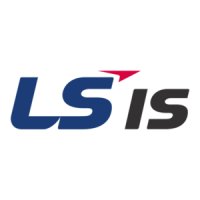
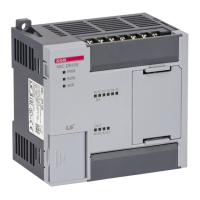





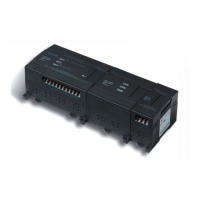
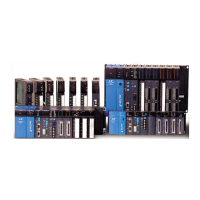

